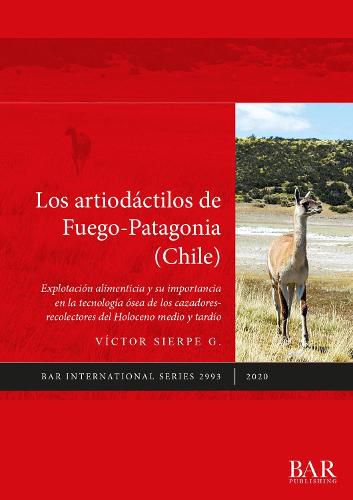Readings Newsletter
Become a Readings Member to make your shopping experience even easier.
Sign in or sign up for free!
You’re not far away from qualifying for FREE standard shipping within Australia
You’ve qualified for FREE standard shipping within Australia
The cart is loading…






This title is printed to order. This book may have been self-published. If so, we cannot guarantee the quality of the content. In the main most books will have gone through the editing process however some may not. We therefore suggest that you be aware of this before ordering this book. If in doubt check either the author or publisher’s details as we are unable to accept any returns unless they are faulty. Please contact us if you have any questions.
{\rtf1\ansi\ansicpg1252\deff0\deflang2057{\fonttbl{\f0\froman\fcharset0 TimesNewRomanPSMT;}{\f1\froman\fcharset0 TimesNewRomanPS;}{\f2\froman\fprq2\fcharset0 Times New Roman;}{\f3\fnil\fcharset0 Verdana;}} {\colortbl ;\red30\green30\blue30;\red255\green255\blue255;} \viewkind4\uc1\pard\cbpat2\sb100\sa100\lang13322\f0\fs24 Este libro presenta la investigacio\u769?n sobre la explotacio\u769?n alimenticia y tecnolo\u769?gica de restos de artioda\u769?ctilos\i\f1 , Hippocamelus bisulcus \i0\f0 (huemul) y \i\f1 Lama guanicoe \i0\f0 (guanaco) provenientes de contextos arqueolo\u769?gicos heteroge\u769?neos del Holoceno medio y tardi\u769?o de Fuego-Patagonia en Chile. Ana\u769?lisis especi\u769?ficos arqueozoolo\u769?gicos y tecnolo\u769?gicos entregan como resultado las diferentes etapas vinculadas al procesamiento de estas dos especies desde la desarticulacio\u769?n hasta la fracturacio\u769?n de huesos largos y falanges para la obtencio\u769?n de me\u769?dula como recurso alimenticio. Resultados fracturas de huesos largos permitieron vincular patrones de desbaste para la obtencio\u769?n de soportes y posteriores procesos tecnolo\u769?gicos para la confeccio\u769?n de una importante diversidad de artefactos o\u769?seos. Los ana\u769?lisis permitieron determinar procesos tecnolo\u769?gicos para el tratamiento de los huesos, aplicados indistintamente a una u otra especie para la elaboracio\u769?n de la industria o\u769?sea, complementando de esta manera un estudio integral y la proposicio\u769?n de cadenas operativas globales de tratamiento por parte de grupos cazadores-recolectores en Fuego-Patagonia. \f2\par \cf1\lang1033 This book presents research on the dietary and technological exploitation of the remains of artiodactyls, \i Hippocamelus bisulcus \i0 (huemul) and \i Lama guanicoe \i0 (guanaco) from the heterogeneous archaeological contexts of the Middle and Late Holocene in Chile. Specific archaeozoological and technological analyses demonstrate the different stages linked to the processing of these two species from disarticulation to the fracture of long bones and phalanges to obtain marrow as a food resource. Results of long bone fractures allowed us to link patterns of grinding to obtain supports and subsequent technological processes for the manufacture of a wide variety of bone artifacts. The analyses made it possible to determine technological processes for the treatment of bones, applied indifferently to one species or another for the elaboration of the bone industry, thus complementing a comprehensive study and the proposal of global operational treatment chains by hunter-gatherer groups in Fuego Patagonia. \cf0\fs22\par \pard\lang2057\f3\fs17\par }
$9.00 standard shipping within Australia
FREE standard shipping within Australia for orders over $100.00
Express & International shipping calculated at checkout
Stock availability can be subject to change without notice. We recommend calling the shop or contacting our online team to check availability of low stock items. Please see our Shopping Online page for more details.
This title is printed to order. This book may have been self-published. If so, we cannot guarantee the quality of the content. In the main most books will have gone through the editing process however some may not. We therefore suggest that you be aware of this before ordering this book. If in doubt check either the author or publisher’s details as we are unable to accept any returns unless they are faulty. Please contact us if you have any questions.
{\rtf1\ansi\ansicpg1252\deff0\deflang2057{\fonttbl{\f0\froman\fcharset0 TimesNewRomanPSMT;}{\f1\froman\fcharset0 TimesNewRomanPS;}{\f2\froman\fprq2\fcharset0 Times New Roman;}{\f3\fnil\fcharset0 Verdana;}} {\colortbl ;\red30\green30\blue30;\red255\green255\blue255;} \viewkind4\uc1\pard\cbpat2\sb100\sa100\lang13322\f0\fs24 Este libro presenta la investigacio\u769?n sobre la explotacio\u769?n alimenticia y tecnolo\u769?gica de restos de artioda\u769?ctilos\i\f1 , Hippocamelus bisulcus \i0\f0 (huemul) y \i\f1 Lama guanicoe \i0\f0 (guanaco) provenientes de contextos arqueolo\u769?gicos heteroge\u769?neos del Holoceno medio y tardi\u769?o de Fuego-Patagonia en Chile. Ana\u769?lisis especi\u769?ficos arqueozoolo\u769?gicos y tecnolo\u769?gicos entregan como resultado las diferentes etapas vinculadas al procesamiento de estas dos especies desde la desarticulacio\u769?n hasta la fracturacio\u769?n de huesos largos y falanges para la obtencio\u769?n de me\u769?dula como recurso alimenticio. Resultados fracturas de huesos largos permitieron vincular patrones de desbaste para la obtencio\u769?n de soportes y posteriores procesos tecnolo\u769?gicos para la confeccio\u769?n de una importante diversidad de artefactos o\u769?seos. Los ana\u769?lisis permitieron determinar procesos tecnolo\u769?gicos para el tratamiento de los huesos, aplicados indistintamente a una u otra especie para la elaboracio\u769?n de la industria o\u769?sea, complementando de esta manera un estudio integral y la proposicio\u769?n de cadenas operativas globales de tratamiento por parte de grupos cazadores-recolectores en Fuego-Patagonia. \f2\par \cf1\lang1033 This book presents research on the dietary and technological exploitation of the remains of artiodactyls, \i Hippocamelus bisulcus \i0 (huemul) and \i Lama guanicoe \i0 (guanaco) from the heterogeneous archaeological contexts of the Middle and Late Holocene in Chile. Specific archaeozoological and technological analyses demonstrate the different stages linked to the processing of these two species from disarticulation to the fracture of long bones and phalanges to obtain marrow as a food resource. Results of long bone fractures allowed us to link patterns of grinding to obtain supports and subsequent technological processes for the manufacture of a wide variety of bone artifacts. The analyses made it possible to determine technological processes for the treatment of bones, applied indifferently to one species or another for the elaboration of the bone industry, thus complementing a comprehensive study and the proposal of global operational treatment chains by hunter-gatherer groups in Fuego Patagonia. \cf0\fs22\par \pard\lang2057\f3\fs17\par }